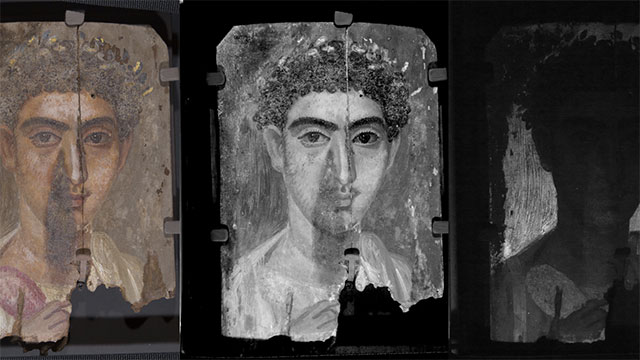EVANSTON - Northwestern University has received a $3.5 million grant from The Andrew W. Mellon Foundation to support the Center for the Scientific Studies in the Arts, a collaborative partnership with the Art Institute of Chicago to investigate and conserve art.
The grant includes two components: $2.5 million in spendable funds to support the center over five years, and $1 million as a permanent endowment to support the position of a center co-director at Northwestern. In order to receive the permanent endowment, the University must raise $2 million in matching funds over the next four years. All funds count toward We Will. The Campaign for Northwestern.
“The fundraising effort is an exciting part of the grant,” said Marc Walton, the center’s co-director and research professor of materials science and engineering in Northwestern’s McCormick School of Engineering. “The University is putting support and infrastructure into this goal because it sees value in work taking place at the intersection of art and science.”
The Mellon Foundation initially funded the center when it was established in 2013. Over the past five years, the center has built up infrastructure — in the form of scientific instruments, faculty, students and administrative support. It also has worked to uncover hidden details in famous paintings by Pablo Picasso, Paul Gauguin, Georgia O’Keeffe and László Moholy-Nagy; peered inside a Roman-era mummy and beneath a medieval bookbinding; and achieved a better understanding of the 20th-century Parisian foundries that produced artistic bronzes.
With the Mellon Foundation’s continued support, the center will expand its core program to offer scientific tools and expertise to institutions across the country as well as bolster its educational efforts with additional classes, workshops and conferences. The grant will fund a new program called Idea Labs, which will support new collaborations among scientists and art conservators, historians, curators and others who could benefit from exploring artistic objects through scientific analysis.
“I am particularly excited about the opportunity to host Idea Labs at the intersection of art and science and I am grateful for the Mellon Foundation’s visionary endowment challenge of the Northwestern co-directorship,” said Francesca Casadio, the center’s co-director and the Grainger Executive Director of Conservation and Science at the Art Institute of Chicago. “This means a brighter future awaits for art research, the preservation of our material culture and the training of a new generation of researchers that, in the tradition of Leonardo DaVinci, will not distinguish left or right brain when applying their ingenuity to advancing our understanding of the world around us.”
The funds raised through the “We Will” Campaign are helping realize the transformational vision set forth in Northwestern’s strategic plan and solidifying the University’s position among the world’s leading research universities. More information on We Will. The Campaign for Northwestern is available at wewill.northwestern.edu.
Collaborating abroad
The Mellon Foundation’s grant comes on the heels of another major award for the Center for the Scientific Studies in the Arts: a five-year, $4 million Partnerships for International Research in Education (PIRE) grant from the National Science Foundation to use computational imaging to study how historic art objects naturally age and degrade over time.
Called the Computationally-Based Imaging of Structure in Materials (CuBISM) project, the new endeavor is a partnership among Northwestern, the Rijksmuseum and University of Amsterdam in the Netherlands, the National Research Council in Italy and the Synchrotron Soleil in France.
Northwestern was among 14 U.S. institutions collaborating with international partners from 24 countries to receive one of this year’s PIRE grants, which will total more than $66 million over the next five years.
As artworks age for decades or even centuries, their paint can darken, crack, yellow or lose its luminosity. But these occurrences involve more than mere aesthetics. These aging processes result from complex chemical and materials science changes, which alter the way light passes through the paint to reach the observer’s eye. The CuBISM project aims to develop computational and experimental tools needed to understand how molecular and microscopic changes in materials tie to a painting’s visual appearance.
“The scientific thematic element of the program is to be able to look at an image with varying techniques — not just our eyeballs — in order to see what’s happening at the materials level,” said Kenneth Shull, professor of materials science and engineering in Northwestern’s McCormick School of Engineering and the grant’s principal investigator.
CuBISM is supported by the PIRE program under grant number 1743748. Other co-principal investigators on the grant include Marc Walton and Francesca Casadio; Oliver Cossairt, assistant professor of computer science in Northwestern’s McCormick School of Engineering; and Aggelos Katsaggelos, the Joseph Cummings Professor of Computer Science in McCormick.


